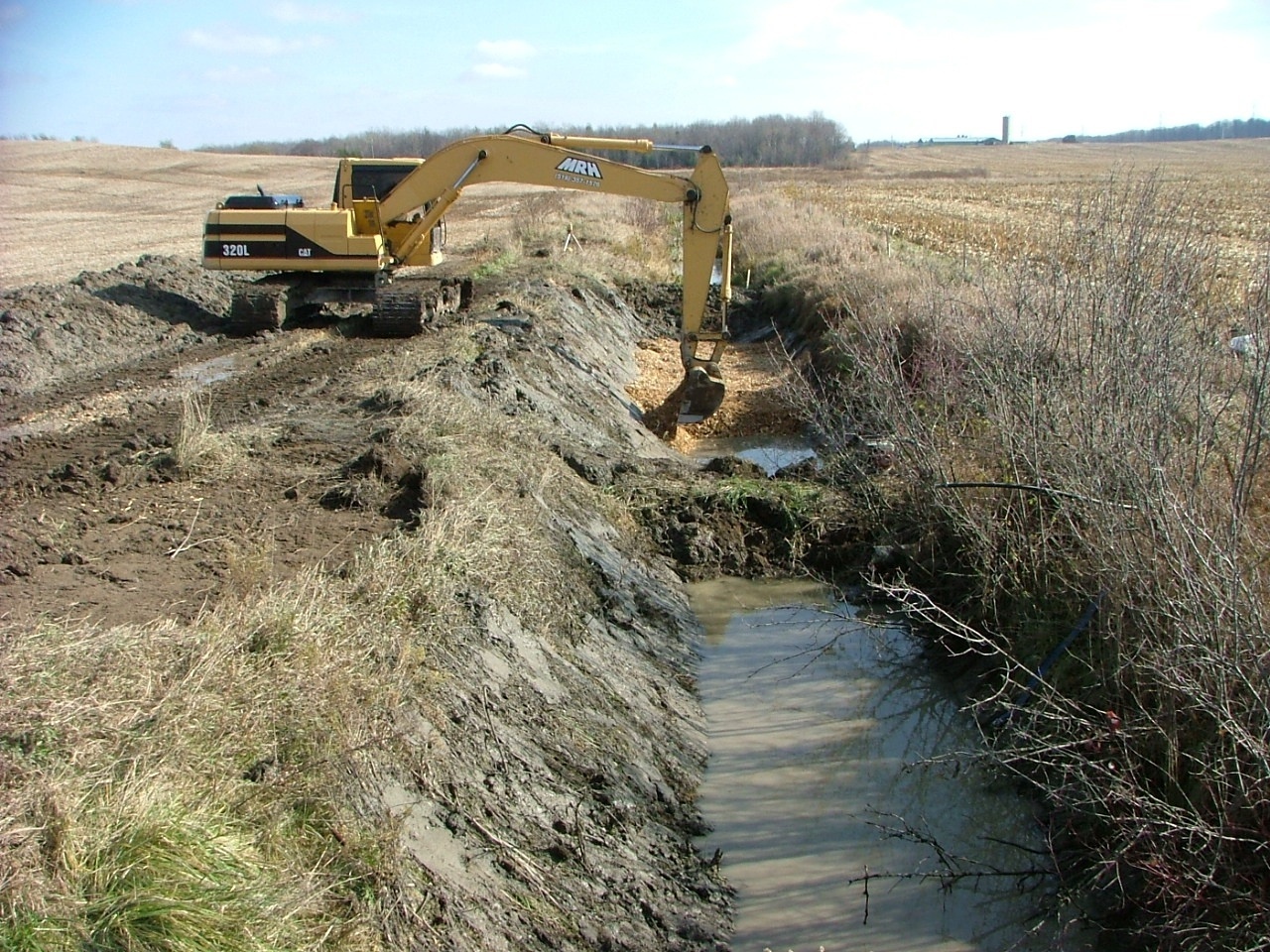Advancing constructed wetlands and denitrifying bioreactors to abate edge-of field nitrogen losses
Nitrate removal and greenhouse gas production in a stream-bed denitrifying bioreactor
Situation: Nitrate loading from wastewater and agricultural practices can have negative effects on groundwater and aquatic ecosystems. Denitrifying bioreactors offer a means of removing nitrate contamination in groundwater and surface waters. However, a possible side effect of this technology is the production of potent greenhouse gases such as nitrous oxide (N2O) and methane (CH4).
Actions: Nitrate removal and greenhouse gas production was examined in a stream-bed bioreactor near the headwaters of the Avon River in southern Ontario. Monthly averages for nitrate removal and greenhouse gas production were recorded over the period of one year.
Take-home message: 
- The highest nitrate loads occurred during the winter and spring, when nitrate removal was at its lowest yielding lower annual nitrate removal – an issue for bioreactors in temperate climates.
- The bioreactor released higher amounts of N2O during colder months when nitrate removal rates were lower and removal was incomplete.
- Methane production was higher during warmer months when nitrate removal was complete.
- Further studies will be necessary in order to create operational guidelines aimed at minimizing GHG production in bioreactors.
For more information:
- Elgood, Z., W.D. Robertson, S.L. Schiff, and R. Elgood. 2010. Nitrate removal and greenhouse gas production in a stream-bed denitrifying bioreactor. Ecological Engineering (36): 1575-1580
- Email Z. Elgood at wroberts@sciborg.uwaterloo.ca